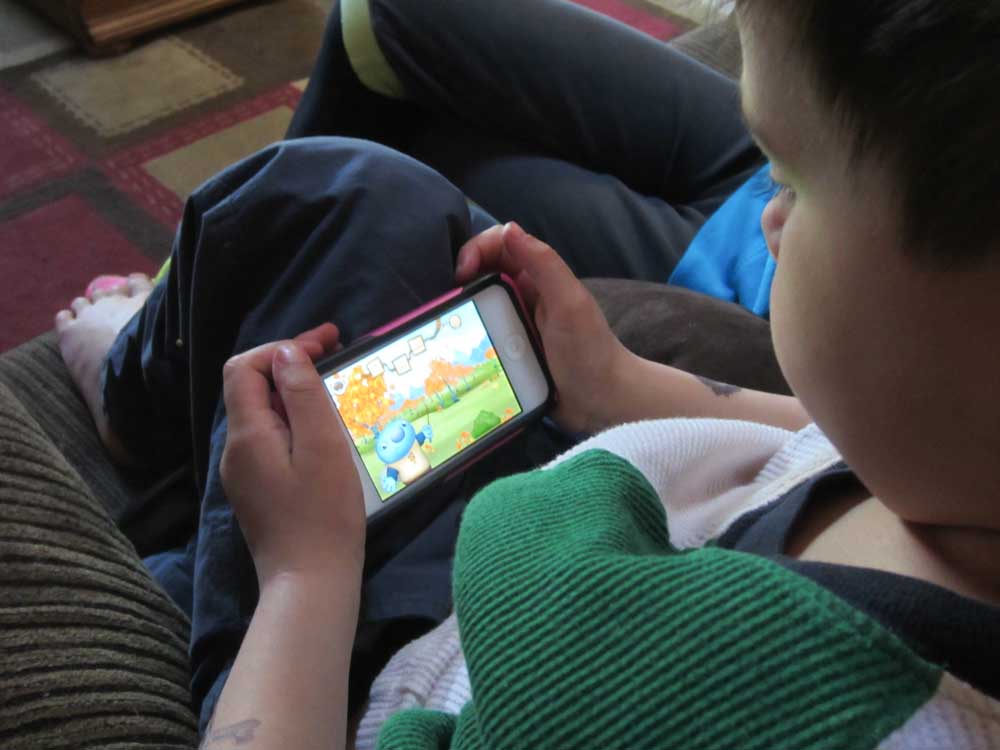the brave new world of e-babysitters
Published 12:00 am Saturday, July 12, 2014

- the brave new world of e-babysitters
by John Cal, for The Bulletin Special Projects / photo by Kari Mauser
When I was a kid, spending the afternoon with a babysitter meant making crafts with Suzie Nakamura from down the street, playing card games with grandma over a cup of Ovaltine, or helping my grandfather weed the garden. At the very least, it meant a few hours with Bert & Ernie of “Sesame Street.”
Trending
Today’s babysitters are much more sophisticated, and becoming integrated into everyday living instead of just being utilized for a few hours on an errant afternoon. But what does it mean to use today’s babysitters responsibly? How are moms aiding their family’s everyday experience with these modern babysitters? Because we no longer call on Suzie, grandma, or grandpa. Instead, we look to iPad, Galaxy and Kindle.
“For our family it really evolves all the time,” said RiKá Tippet, mother of 5½-year-old son Metao, and 6-month-old daughter, Talula. “We really limited electronic use from the beginning. We have a TV, but we don’t have cable. (Metao) wasn’t allowed to watch cartoons for a long time. He didn’t even see Thomas (the Train) till he was 4.”
Tippet’s method is to stay on top of her apps.
“What works for us continues to change, so when something stops working we delete it, and we’re always trying something new,” she offered. “But I will say, it’s a double edged sword. Sometimes we’ll allow him to watch a 25-minute show on the iPad as a reward … but it’s like flipping a switch with his attitude — he becomes crabby and demanding … I think anytime their brains are allowed to ‘zone’ you’ll start to notice behavioral changes.”
While tablet use is ultimately up to parents, tablets sometimes enter the home without warning. Ellen Paulsen’s son Ted, now 6, was given a tablet for his fourth birthday.
“It was a Zoodles Tablet and was supposed to be better for you to control, but now he has an Android,” she said.
Trending
Paulsen’s 3-year-old daughter Jayme also has a tablet.
“She’s not allowed to use it if she’s throwing a fit. But if we want her to be entertained and quiet, we’ll sometimes put on a show for her to watch. … There are educational games the kids like playing and things they like to read on the tablet, but I would say for us it’s mostly entertainment like Netflix.”
For Paulson, passwords are important, ensuring that her children are only able to use their tablets when they’ve been respectful and earned the reward.
While passwords can aid in tablet monitoring, Kathy Bierwagen and her family also rely on app reviews to know what is appropriate for their children, three boys — Cameron, 15, Blake, 13, and Alex, 10.
“Before we let them download anything, we check online reviews,” Bierwagen said. “It also stays in our family room so we can monitor its usage. The kids have to ask permission before they can take it to their bedroom to watch a movie on it. It’s treated like a privilege.
“We’ve had an iPad now for about two years, and what they’ve been interested in has changed over the years,” Bierwagen continued. “Game usage has decreased, and now they just like to watch movies and do some reading on it. For us, it’s been a lot of training, teaching the kids how to use the Internet and what’s appropriate.”
Rayne Cedergreen also finds empowering her children to make good choices for themselves is the best approach.
“My kids would quickly find out what passwords were, and so it was really important for me to teach them how to work out decisions on their own.”
She does, however, receive an email alert whenever her girls download apps to their devices, a method of monitoring that works best for her family.
Cedergreen’s middle child, Rosie, has a tablet — a Kindle she got for her 11th birthday — and 16-year-old Ivy has an iPhone.
Cedergreen also has a younger son, Isaak, who is 5 and who she says is really into superheroes.
“Something that I needed to remember was that each of my kids is different and one approach wasn’t going to work for all of them.”
Keli Janosek, also a mother of 3, in a single tableted home.
“For us, it was a birthday present for my oldest, Aubrey (age 11),” said Janosek, “and we knew we were going to have to set up parameters right away.”
Keli uses a Kindle-specific app called Kindle Freetime where each child can be set up with their own account that limits screen time according to parent parameters.
“We have it set up so that they can have unlimited reading time, but limited game or music access,” Janosek explained, adding that the built in tracking keeps her from having to monitor a timer. “You can also set it up to not work at all at different times of the day, and there are different settings for weekends and weekdays.”
Whenever a set time is over, the app shows a picture of a child playing a kite with the words “Time to find a new activity” across the screen.
“Electronic management is hard because I know I tend to zone out on screens too, and while setting them up with screen time was making it possible for me to get stuff done around the house it ultimately wasn’t helping. It was creating conflicts and putting them in a bad mood, and I began to think it wasn’t as helpful as I thought … but everybody does it,” expounded Janosek. “There’s guilt that comes from the studies that tell us we shouldn’t use screen time at all, but I try not to beat myself up about it. Everything in moderation, and I don’t care what any parent tells you. We’re all just winging it.”








